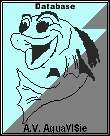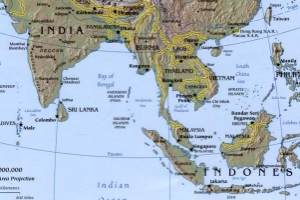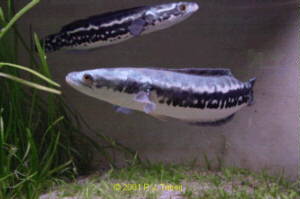 |
Channa asiatica |
 |
||||||||||||||||||||||
|
|
|
|
||||||||||||||||||||||
| Explanation of the symbols | ||||||||||||||||||||||||
|
|
|
|||||||||||||||||||||||
|
||||||||||||||||||||||||
|
You should not keep this predator together with smaller fish because they are eaten. The aquarium should be large and you should leave a lot of free swimming space. This fish only is satisfied with large, live food such as fish or shrimp. Breeding is not difficult. 1500-3000 eggs are laid and fertilized and brought immediately to the water surface. The male cares for the fry and keeps them together. After 2 days the eggs hatch and after 5 days the yolk sack is digested and the young should be fed with baby brine shrimp. After a week you can give them larger food. You should give them enough, otherwise they eat each other. After 2 months you should remove the young, or they will be eaten by their parents. |
||||||||||||||||||||||||
|
|
||||||||||||||||||||||||
|
Peter-Jan Taheij |
||||||||||||||||||||||||
 |
||||||||||||||||||||||||
|
|
||||||||||||||||||||||||
